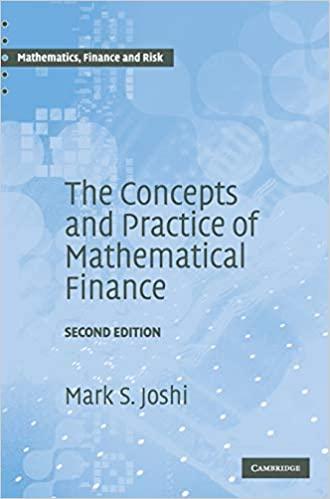



Unknown Variable Name Variable Value A Bond's annual coupon payment $50.00 B $1,000 Bond's par value Semiannual required return 4.375% to expect that Amelia's potential bond investment will exhibit an intrinsic value less than Based on this equation and the data, it is reasonable $1,000 Now, consider the situation in which Amelia wants to earn a return of 5%, but the bond being considered for purchase offers a coupon rate of 7%. Again, assume that the bond pays semiannual interest payments and has three years to maturity. If you round the bond's intrinsic value to the nearest whole dollar, then its intrinsic value of is its par value, so that the bond is trading at Given your computation and conclusions, which $1,899 Howing statements is true? $739 O When the coupon rate is greater tha required return, the bond's intrinsic value will be less than its par value. $1,055 O A bond should trade at a par when rate is greater than Amelia's required return. $633 When the coupon rate is greater than Amelia's required return, the bond should trade at a premium. O When the coupon rate is greater than Amelia's required return, the bond should trade at a discount. Unknown Variable Name Variable Value Bond's annual coupon payment $50.00 B Bond's par value $1,000 Semiannual required return 4.375% Based on this equation and the data, it is reasonable to expect that Amelia's potential bond investment will exhibit an intrinsic value less than $1,000. Now, consider the situation in which Amelia wants to earn a return of 5%, but the bond being considered for purchase offers a coupon rate of 7%. Again, assume that the bond pays semiannual interest payments and has three years to maturity. If you round the bond's intrinsic value to the nearest whole dollar, then its intrinsic value of is its par value, so that the bond is trading at equal to Given your computation and conclusions, which of the followin true? greater than When the coupon rate is greater than Amelia's requ bond's intrinsic value will be less than its par value. less than O A bond should trade at a par when the coupon rate is yreater Liar Amelia's required return. When the coupon rate is greater than Amelia's required return, the bond should trade at a premium. When the coupon rate is greater than Amelia's required return, the bond should trade at a discount. Unknown A Variable Name Bond's annual coupon payment Bond's par value Semiannual required return Variable Value $50.00 $1,000 4.375% B to expect that Amelia's potential bond investment will exhibit an intrinsic value less than Based on this equation and the data, it is reasonable $1,000. Now, consider the situation in which Amelia wants to earn a return of 5%, but the bond being considered for purchase offers a coupon rate of 7%. Again, assume that the bond pays semiannual interest payments and has three years to maturity. If you round the bond's intrinsic value to the nearest whole dollar, then its intrinsic value of is its par value, so that the bond is trading at Given your computation and conclusions, which of the following statements is true? a premium a discount When the coupon rate is greater than Amelia's required return, the bond's intrinsic value will be less than its par v par O A bond should trade at a par when the coupon rate is greater than Amelia's required return. When the coupon rate is greater than Amelia's required return, the bond should trade at a premium. When the coupon rate is greater than Amelia's required return, the bond should trade at a discount. Unknown Variable Value $50.00 Variable Name Bond's annual coupon payment Bond's par value B $1,000 Semiannual required return 4.375% to expect that Amelia's potential bond investment will exhibit an intrinsic value less than Based on this equation and the data, it is reasonable $1,000. Now, consider the situation in which Amelia wants to earn a return of 5%, but the bond being considered for purchase offers a coupon rate of 7%. Again, assume that the bond pays semiannual interest payments and has three years to maturity. If you round the bond's intrinsic value to the nearest whole dollar, then its intrinsic value of is its par value, so that the bond is trading at Given your computation and conclusions, which of the following statements is true? O When the coupon rate is greater than Amelia's required return, the bond's intrinsic value will be less than its par value. A bond should trade at a par when the coupon rate is greater than Amelia's required return. When the coupon rate is greater than Amelia's required return, the bond should trade at a premium. O When the coupon rate is greater than Amelia's required return, the bond should trade at a discount










